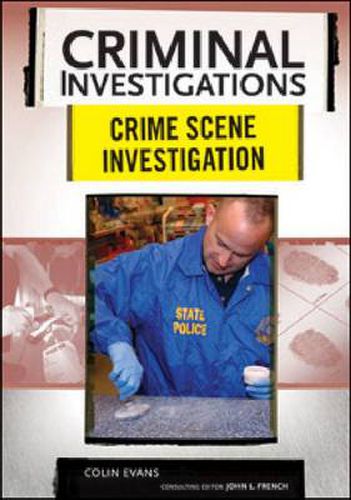Readings Newsletter
Become a Readings Member to make your shopping experience even easier.
Sign in or sign up for free!
You’re not far away from qualifying for FREE standard shipping within Australia
You’ve qualified for FREE standard shipping within Australia
The cart is loading…






The relatively new field of criminology and criminal science has been a boon to law enforcement agencies worldwide. In the past, police often relied on eyewitness testimony to identify criminals and solve crimes, and criminals who fled to other regions could readily avoid arrest. Today, modern forensic techniques give police a wide range of tools with which to identify criminals and prove guilt. But successfully investigating a crime scene requires expertise and attention to detail.Using landmark cases to illustrate forensics in action,
Crime Scene Investigation
details the emergence of modern crime-fighting techniques from the mid-1800s to the present, focusing on how crime scenes are treated, how evidence is processed, and how evidence is used in court to build a case for conviction. Chapters of this title include: Fingerprinting; Identification of Remains; Offender Profiling; Questioned Documents; Ballistics; Blood Spatter Analysis; DNA; Explosives; and, Time of Death. Cases covered in this title include: Colin Pitchfork, serial killer; George Metesky, mad bomber; Steve Benson, lethal electronics whiz; John Branion, deadly doctor; and, Angelo John LaMarca, killer kidnapper.
$9.00 standard shipping within Australia
FREE standard shipping within Australia for orders over $100.00
Express & International shipping calculated at checkout
The relatively new field of criminology and criminal science has been a boon to law enforcement agencies worldwide. In the past, police often relied on eyewitness testimony to identify criminals and solve crimes, and criminals who fled to other regions could readily avoid arrest. Today, modern forensic techniques give police a wide range of tools with which to identify criminals and prove guilt. But successfully investigating a crime scene requires expertise and attention to detail.Using landmark cases to illustrate forensics in action,
Crime Scene Investigation
details the emergence of modern crime-fighting techniques from the mid-1800s to the present, focusing on how crime scenes are treated, how evidence is processed, and how evidence is used in court to build a case for conviction. Chapters of this title include: Fingerprinting; Identification of Remains; Offender Profiling; Questioned Documents; Ballistics; Blood Spatter Analysis; DNA; Explosives; and, Time of Death. Cases covered in this title include: Colin Pitchfork, serial killer; George Metesky, mad bomber; Steve Benson, lethal electronics whiz; John Branion, deadly doctor; and, Angelo John LaMarca, killer kidnapper.